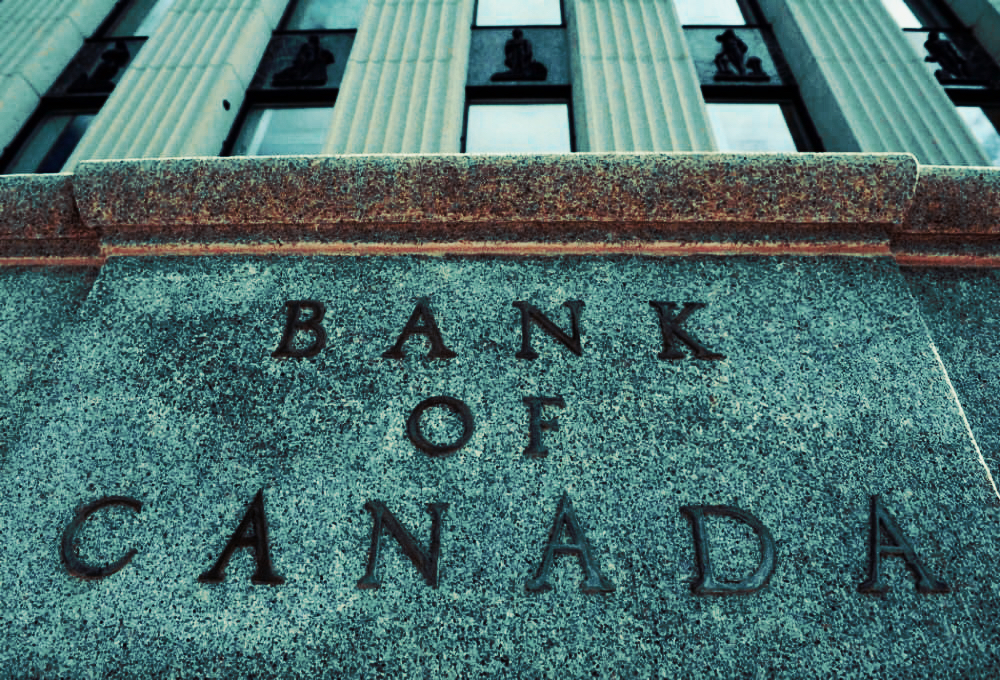by Hubert Marleau, Market Economist, Palos Management
Canada runs a twin-deficit-economy, and can ill-afford to be ahead of the curve. As a rule it must be one step behind the U.S.. Canada has two deficits that sap depressed private savings – a current account deficit and a budget deficit. Thus, it’s imperative for Canada to attract foreign capital. It’s therefore necessary to keep interest rates relatively attractive and have the Loonie relatively stable.
In this regard, the Bank of Canada made a crucial decision today to keep the policy rate at 1.75% and wait to see what the Fed will do on September 18. Although the inversion of the yield curve, the narrower interest rate differentials between Canada and the U.S. and the decline in the Canadian neutral rate, favoured a rate cut, economic conditions clearly did not justify one.
Moreover, Poloz must have an eye on October’s Federal election. So far the independence of the Bank of Canada has not been questioned by Canadian politicians. Surely, the Governing Council does not wish to attract unwanted attention with a rate cut just before a toss-up federal election. It should be noted that the Central Banks had other good excuses to delay the widely expected rate cut.
The Gross Domestic Product, the most comprehensive measure of an economy’s overall performance, increased at an annual rate of 3.7% in real terms and 8.3% in dollar terms in Q2--beating even the most optimistic expectations and far stronger than the 2.3% expected by the Bank of Canada. Industry data showed output increases of 0.2% in June, the gains were broad across 17 of the 20 industrial classifications.
According to several high frequency models, the solid handoff from the June output and the August CFIB Barometer Index, GDP growth should continue to expand in the second half of 2019, albeit at a slower pace--perhaps 1.5%. The inventory cull in Q2 could boost production and the increase in the personal saving rate suggests that the consumer is well placed to revive spending.
Canada’s current account balance is doing a lot better than it has in years as a result of a turnaround in exports and a significantly improved investment income resulting from rising profits and dividends paid to Canadian businesses which have foreign operations. The current account balance showed a small deficit of $6.4 billion in Q2 and was easily financed with foreign capital investments.
Consequently, the Canadian dollar was stable, even though interest spreads narrowed in favour of the U.S. for the period under consideration. In a separate report, Statistics Canada showed that foreign investment into Canada has been picking up since the dismal exodus of capital from the oil patch.
Statistics Canada reported that Inflation was much stronger than expected. In spite of a 0.4% month-over-month seasonally adjusted rise, the headline inflation remains at the 2.0% target rate.
At this point in time, the 2-10 yield curve inversion does not mean that a recession is imminent or that the Bank of Canada is too tight. Torsten Slok, chief Economist of the Deutsche Bank Securities, made the following observation: “ According to the New York Fed, the term premium for US 10-year rates is currently -1.30%. In plain English, this means that 1.3 percentage points of the decline in 10-year rates cannot be explained by Fed expectations or changed expectations to the economic outlook.
With this backdrop, it is difficult to interpret the 2s-10s yield curve inversion as a recession signal because most of the recent decline in 10-year rates is not because of the market changing its view on the economic outlook or what the Fed will do. Even if the 2s-10s yield curve inversion is a recession signal, it is not clear when we will have a recession.” I believe that the above observation is applicable to Canada.
Nevertheless, the language was dovish and in tune with the market consensus that the next move is down and that Poloz will eventually join the global parade toward easing monetary policy. What it means is that like or not the Canadian monetary authorities, albeit with a lag, will eventually follow through and imitate the other monetary guardians.
The lag bodes well for the Loonie and does increase the probability that the exchange value of the CAD will slowly head north to its Purchasing Power Parity Rate of 78 US cents. However, if for example oil prices were to get much lower than the estimated $55 marginal cost of production or Congress decided not to pass the revamped Nafta deal, Canada would lose some of it’s attraction as a destination for foreign capital and all bets would be off the Loonie.
P.S. “In sum, Canada’s economy is operating close to potential and inflation is on target. However, escalating trade conflicts and related uncertainty are taking a toll on the global and Canadian economies. In this context, the current degree of monetary policy stimulus remains appropriate. As the Bank works to update its projection in light of incoming data, the Governing Council will pay particular attention to global developments and their impact on the outlook for Canadian Growth and inflation.”
Copyright © Palos Management













